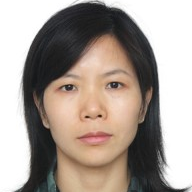Synthesis and Photophysical Properties of Transition Metal Complexes
A special issue of Molecules (ISSN 1420-3049). This special issue belongs to the section "Physical Chemistry".
Deadline for manuscript submissions: closed (31 March 2022) | Viewed by 2465
Special Issue Editor
Interests: transition metal complexes; photosensitizer; oxygen sensing; up-conversion; photodynamic therapy
Special Issues, Collections and Topics in MDPI journals
Special Issue Information
Dear Colleagues,
Recently, transition metal complexes have received considerable attention for their applications in photocatalysis, bio-imaging and molecular sensing, photodynamic therapy (PDT), triplet–triplet annihilation-based up-conversion (TTA UC), etc. Different from conventional organic photosensitizers, transition metal atoms with a large atomic number can induce strong spin–orbital coupling (SOC) and facilitate the intersystem crossing (ISC) processes in these complexes, which are prohibited by selection rules. Due to this heavy atom effect, efficient ISCs and phosphorescence from the low energy triplet states are frequently observed in transition metal complexes. Although strong absorption is highly desired for efficient energy conversion and electronic transfer, the allowed transition from ground state to a metal–ligand charge transfer state is commonly a weak absorption. Furthermore, conventional complexes usually suffer from a short triplet state lifetime, the elongation of which requires effective ISC mediated by the transition metal center to facilitate the formation and evolution to ligand localized triplet excites states. Though many successful stories have been reported, a thorough understanding of the structure–properties correlation with the photophysical properties of these transition metal complexes would be necessary to overcome the abovementioned challenges, which is currently unavailable. This Special Issue of the journal Molecules is thus devoted to highlighting recent progress on design, synthesis, photophysical properties, and applications of novel transition metal complexes for applications in fields of photocatalysis, bio-imaging, molecular sensing, PDT and TTA UC, etc.
Prof. Dr. Huimin GuoGuest Editor
Manuscript Submission Information
Manuscripts should be submitted online at www.mdpi.com by registering and logging in to this website. Once you are registered, click here to go to the submission form. Manuscripts can be submitted until the deadline. All submissions that pass pre-check are peer-reviewed. Accepted papers will be published continuously in the journal (as soon as accepted) and will be listed together on the special issue website. Research articles, review articles as well as short communications are invited. For planned papers, a title and short abstract (about 100 words) can be sent to the Editorial Office for announcement on this website.
Submitted manuscripts should not have been published previously, nor be under consideration for publication elsewhere (except conference proceedings papers). All manuscripts are thoroughly refereed through a single-blind peer-review process. A guide for authors and other relevant information for submission of manuscripts is available on the Instructions for Authors page. Molecules is an international peer-reviewed open access semimonthly journal published by MDPI.
Please visit the Instructions for Authors page before submitting a manuscript. The Article Processing Charge (APC) for publication in this open access journal is 2700 CHF (Swiss Francs). Submitted papers should be well formatted and use good English. Authors may use MDPI's English editing service prior to publication or during author revisions.






